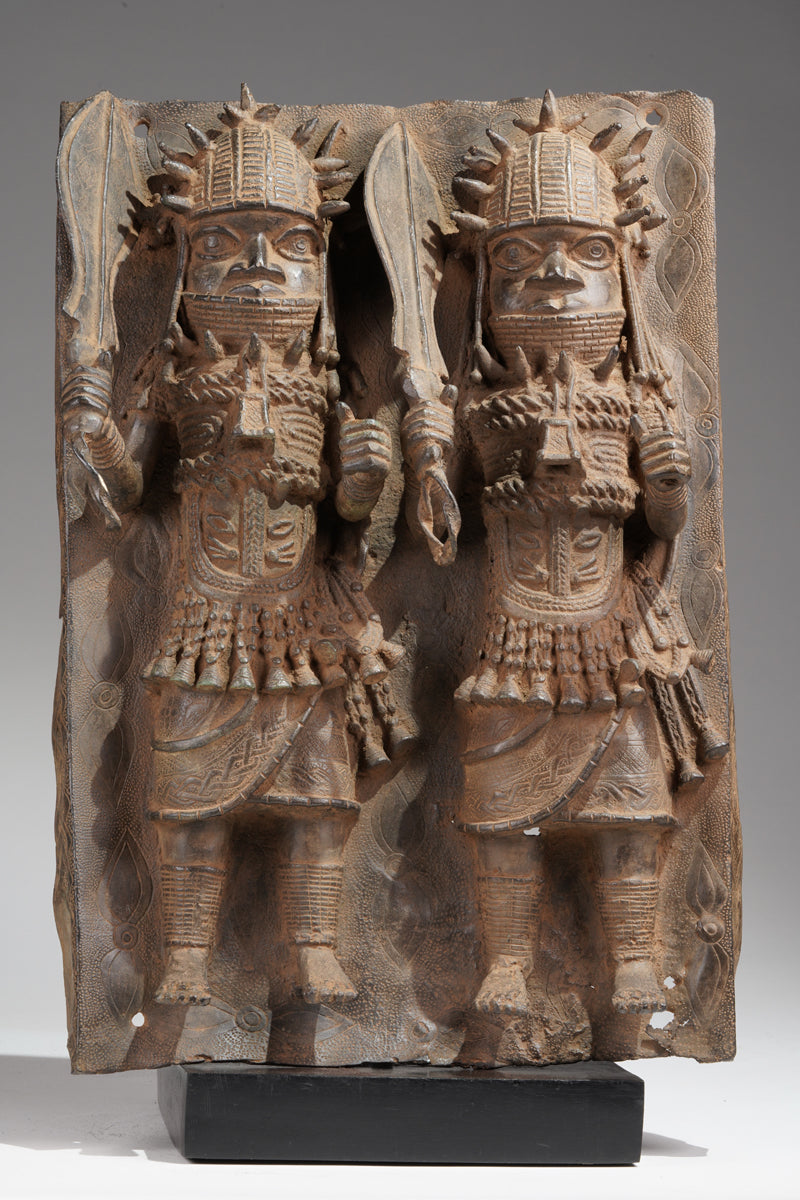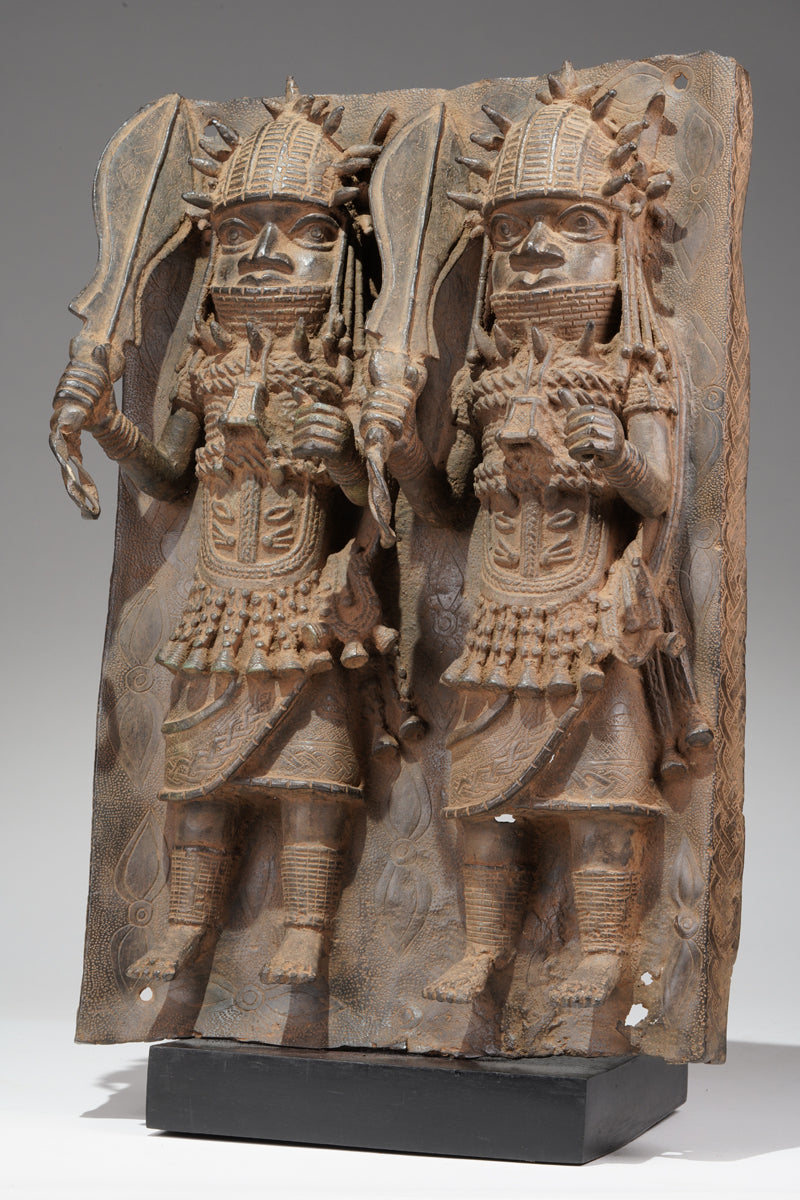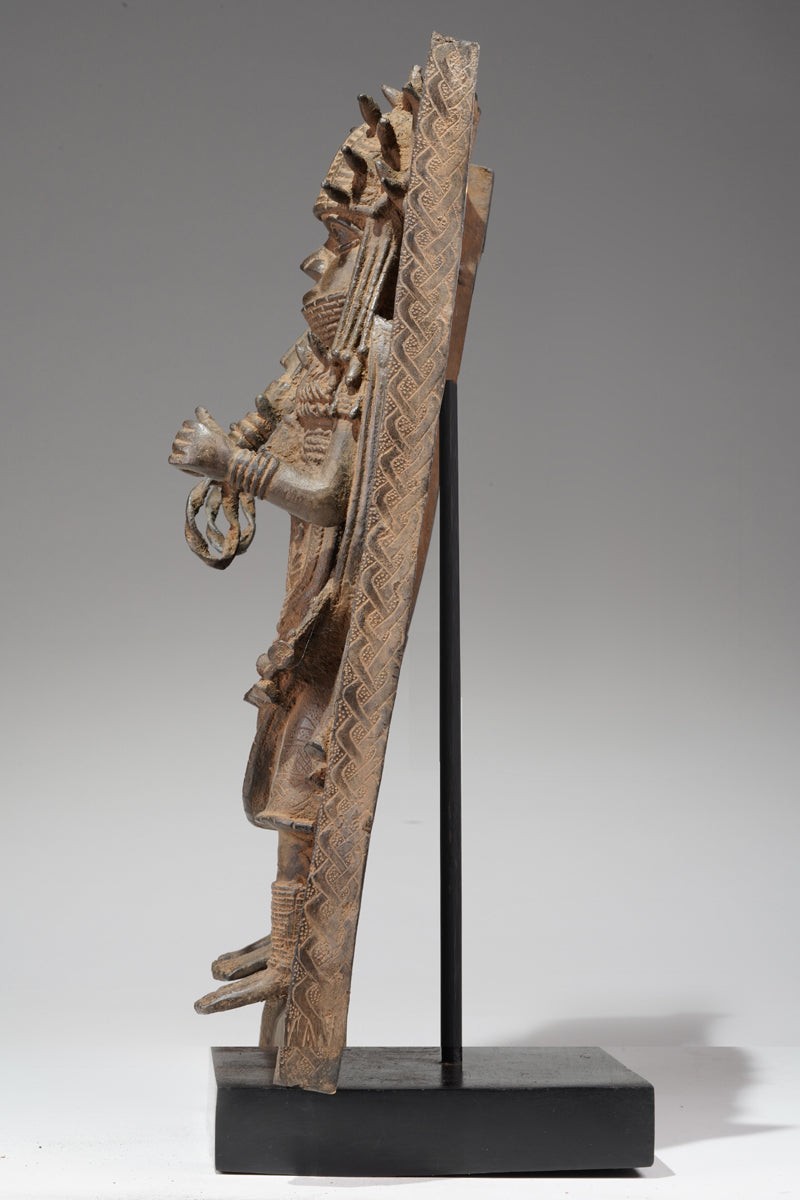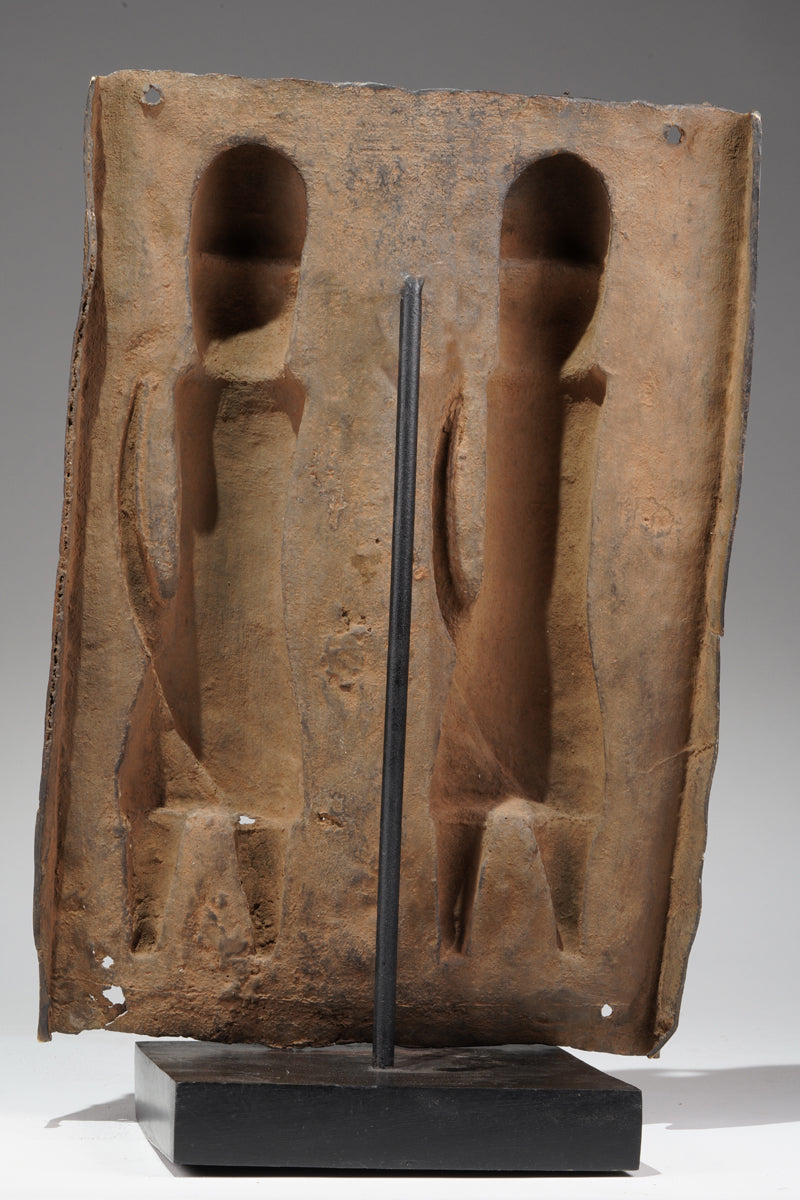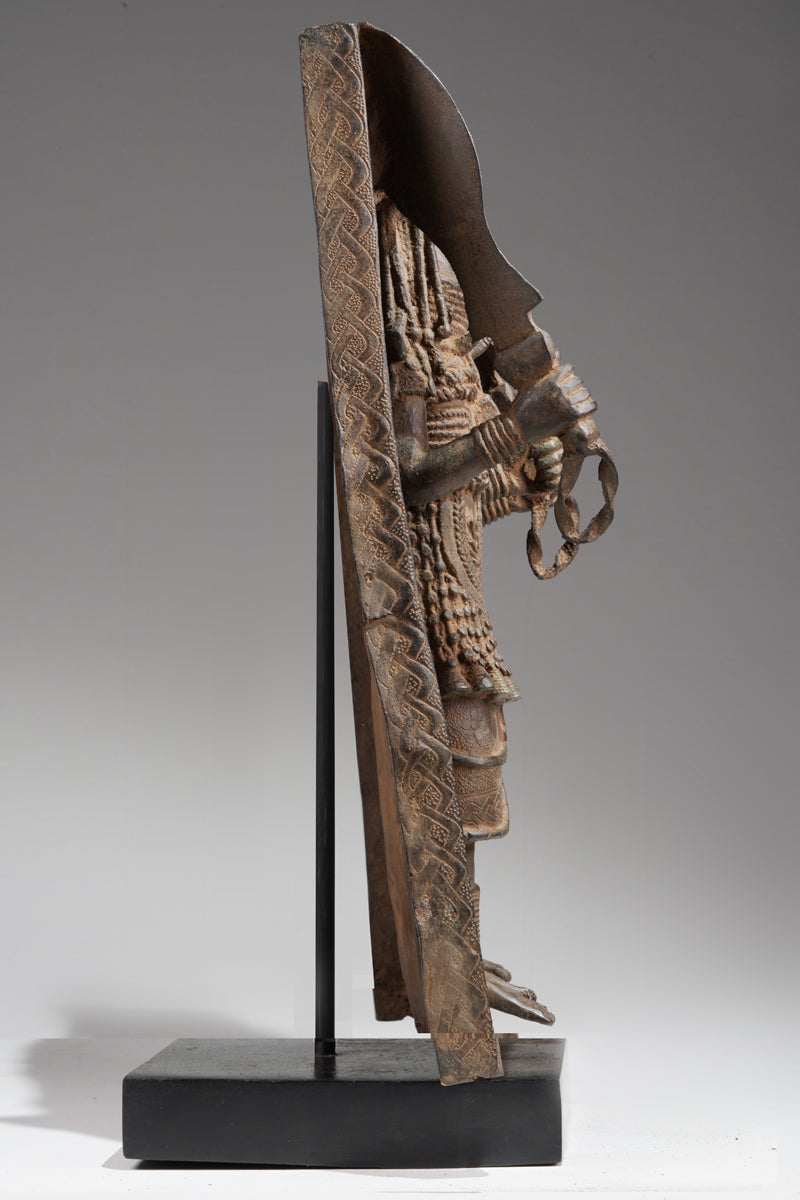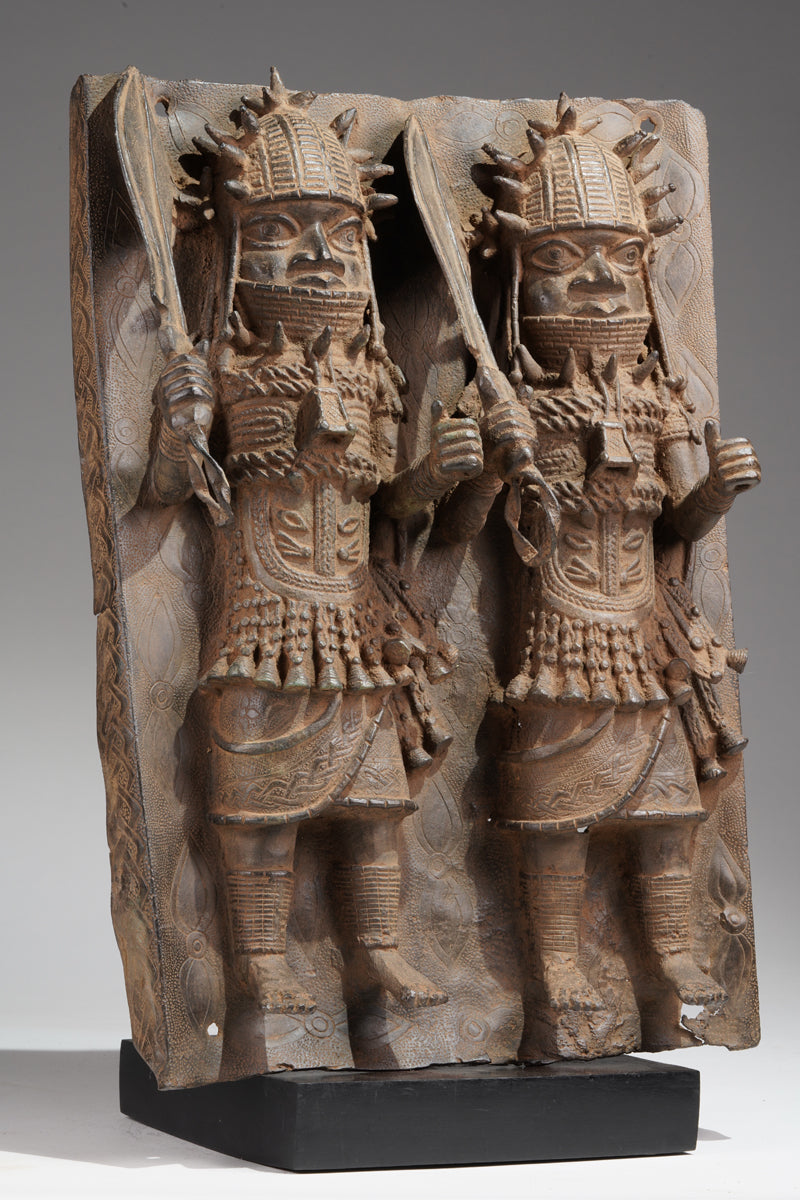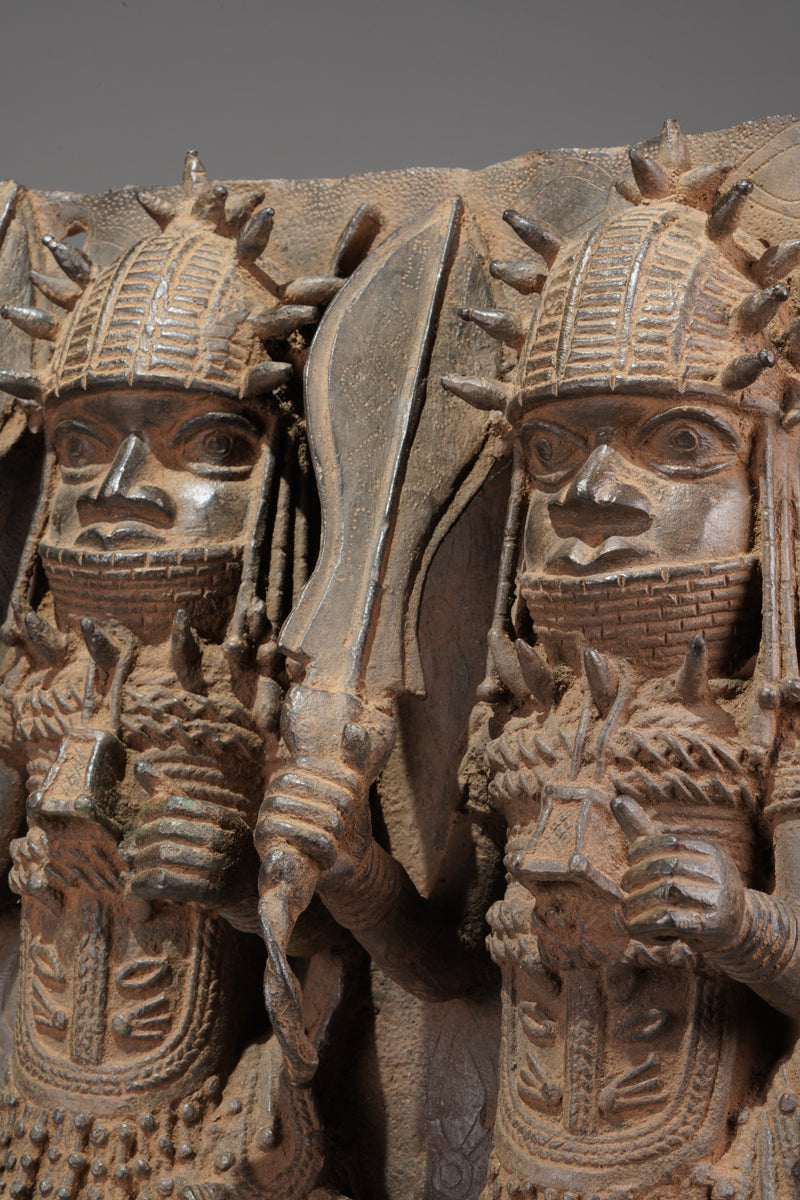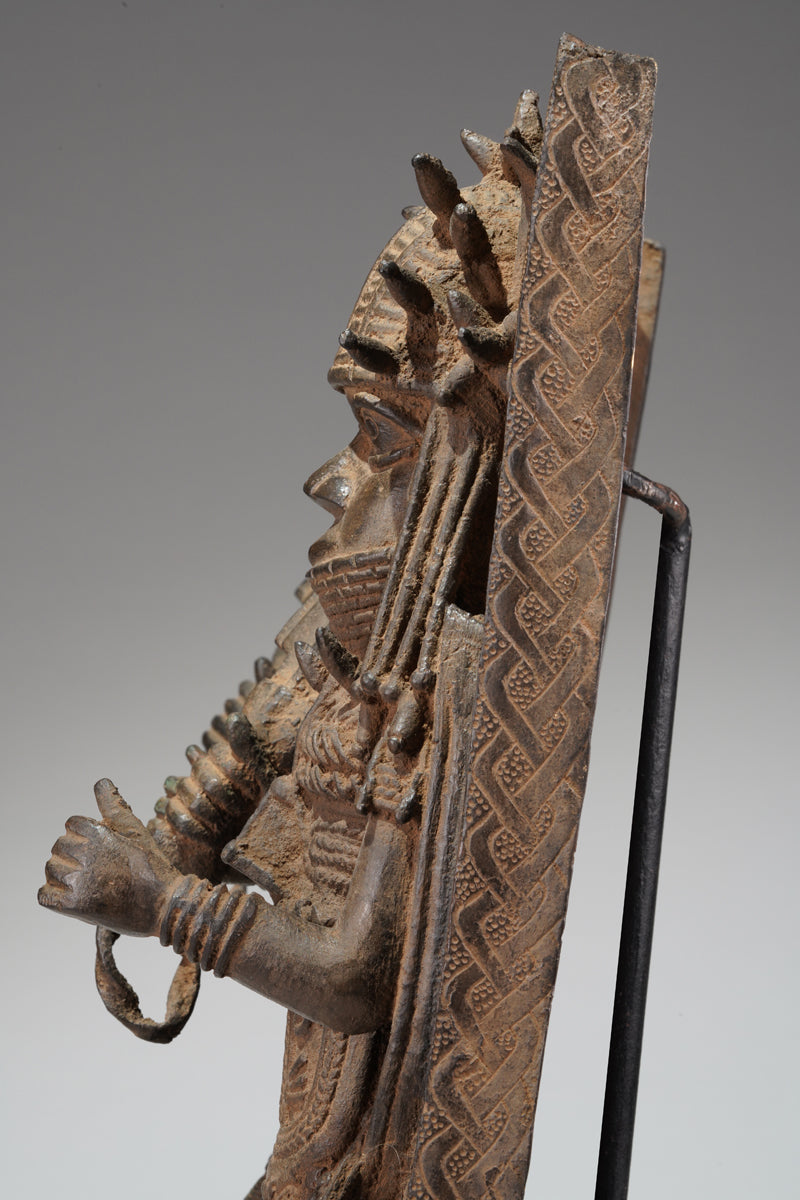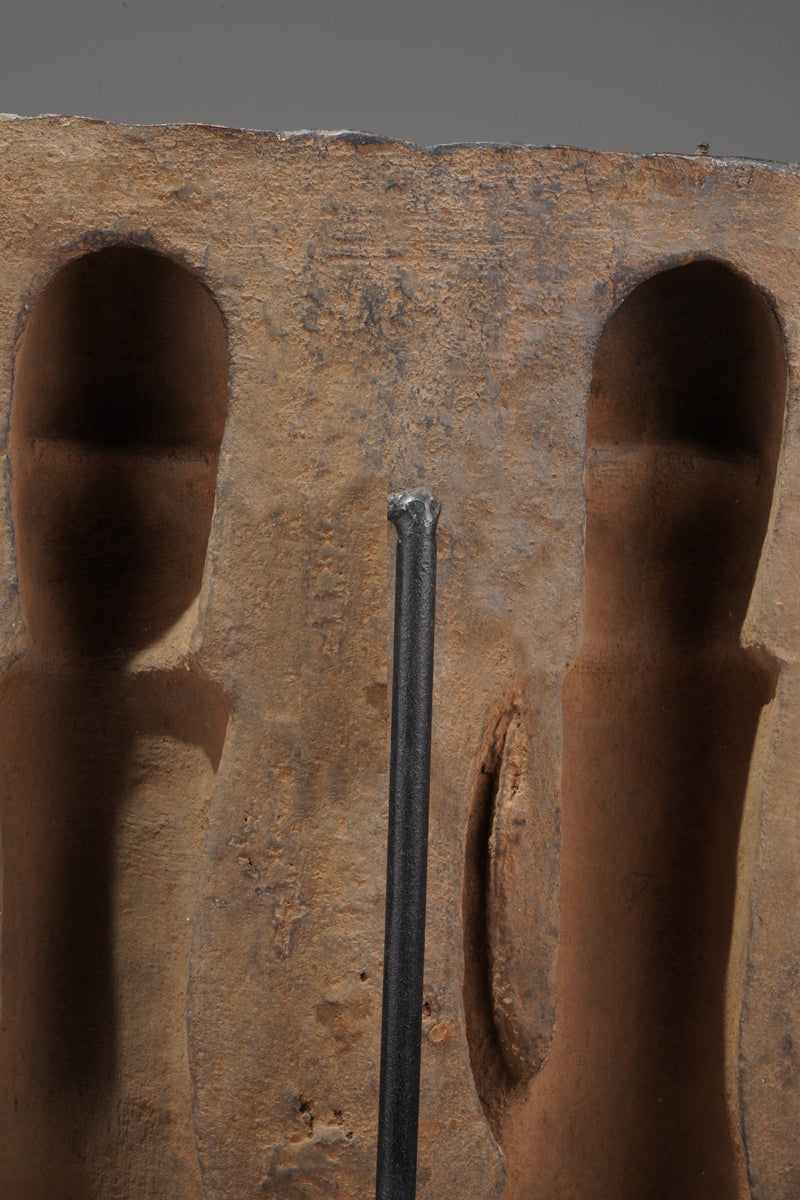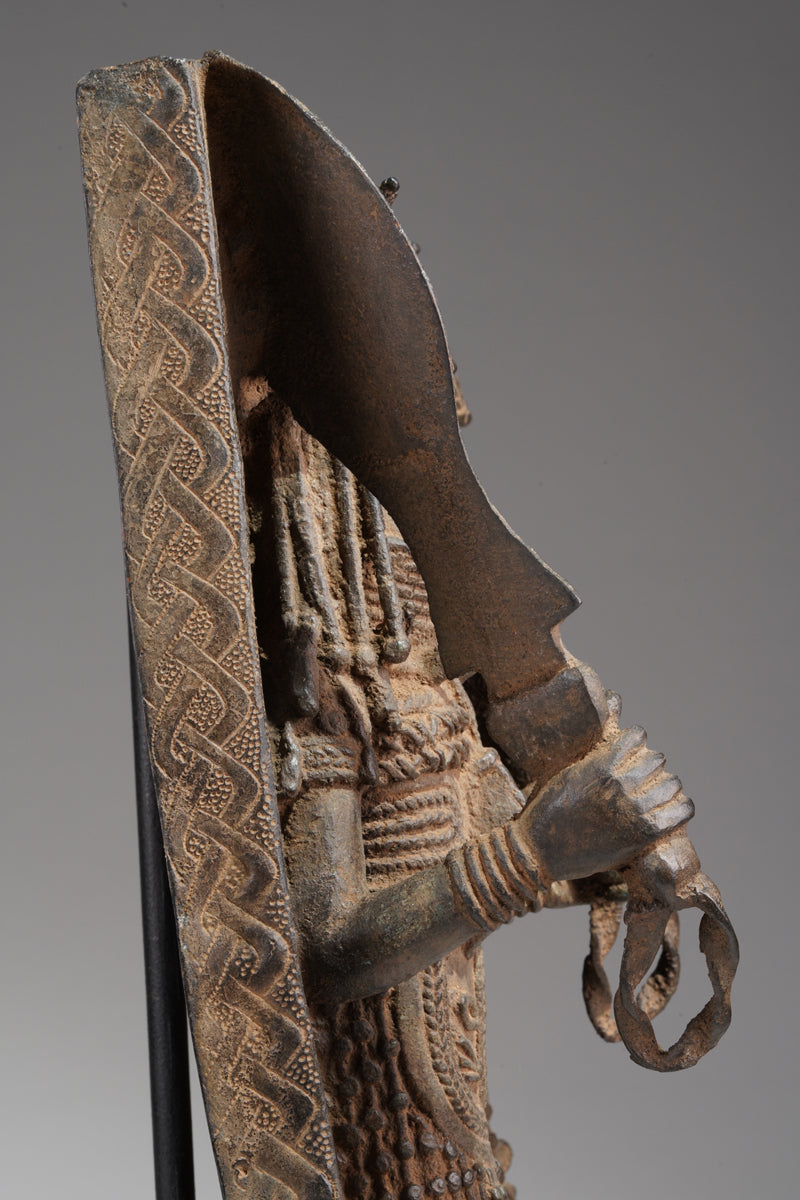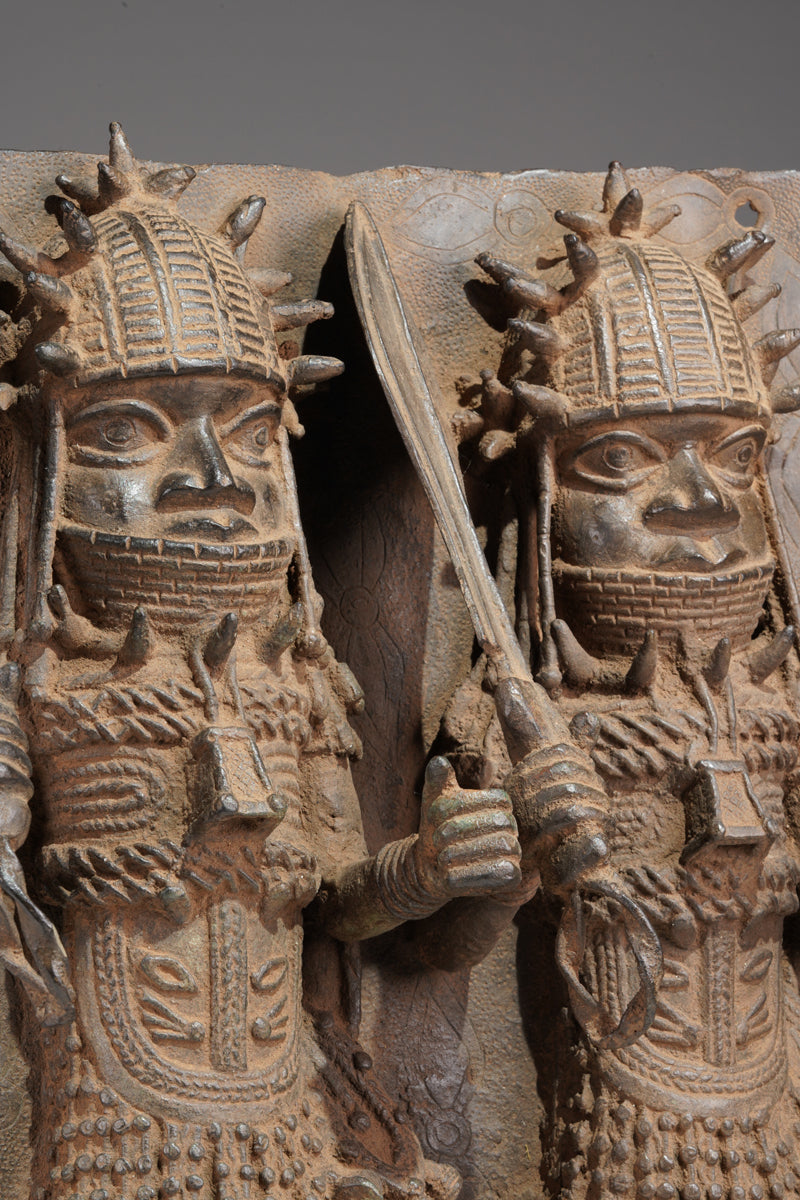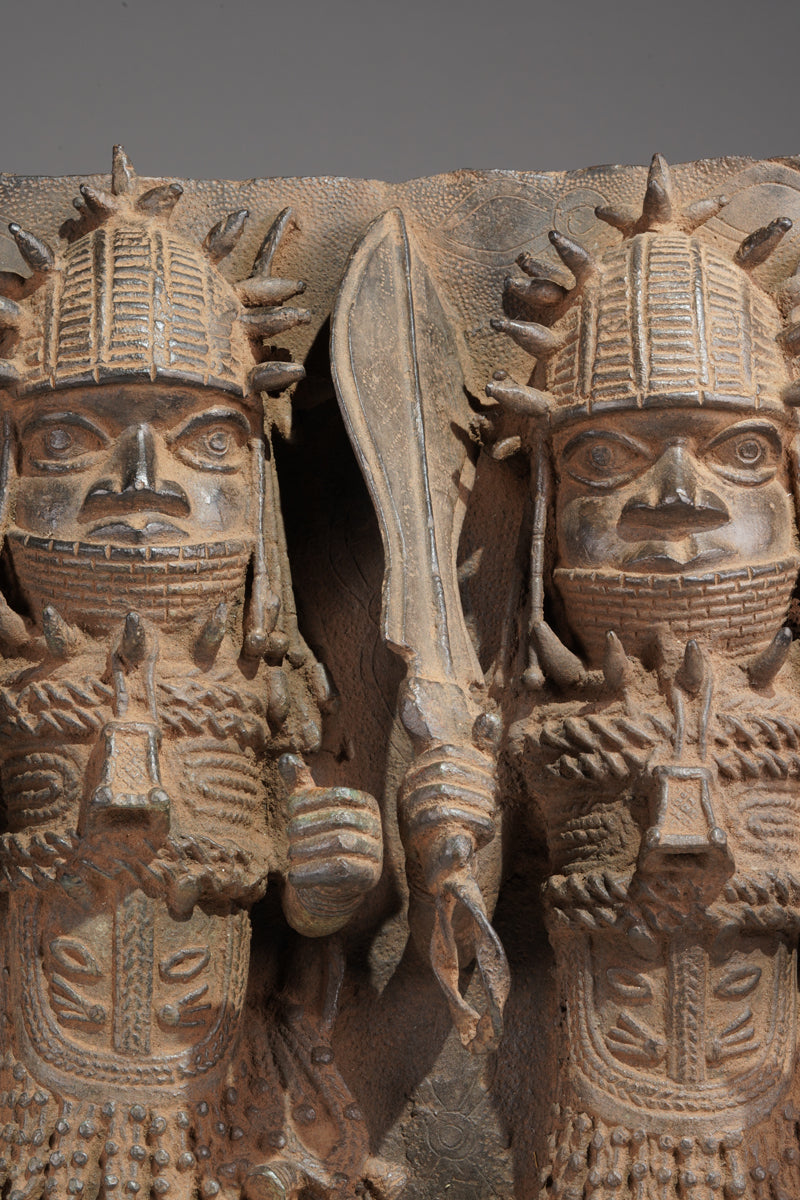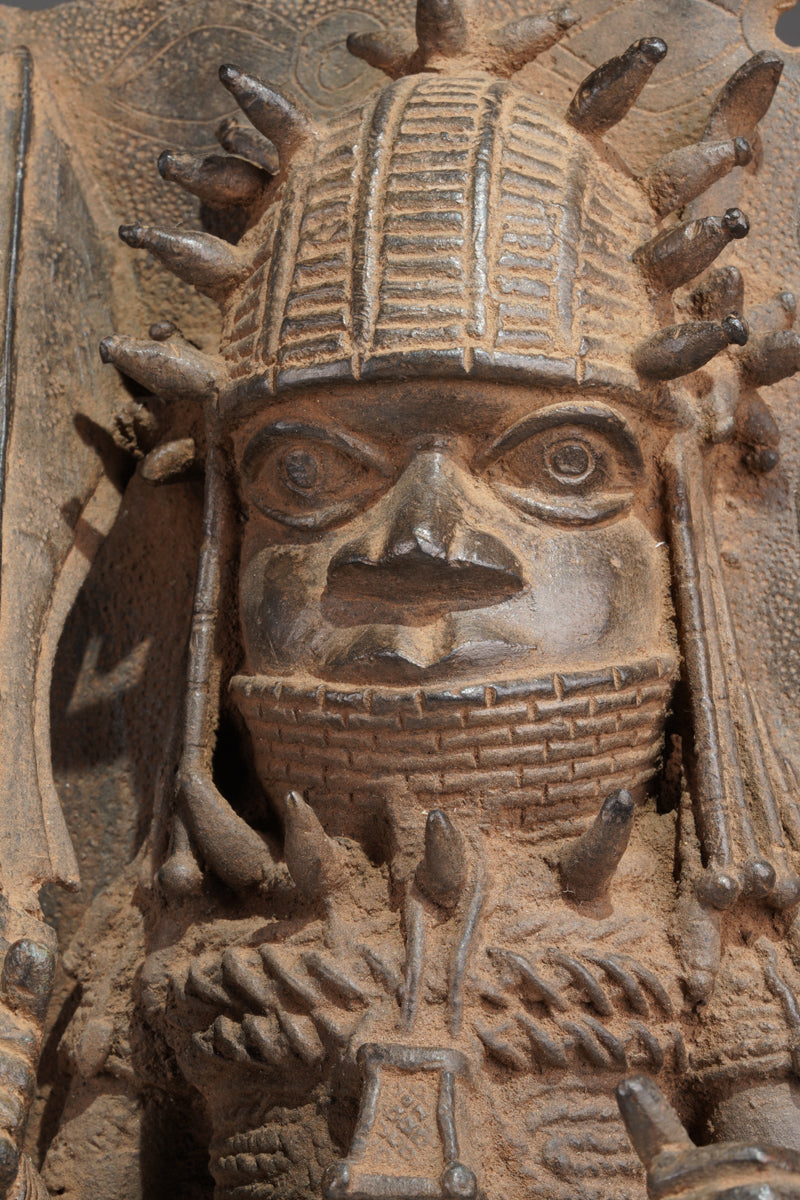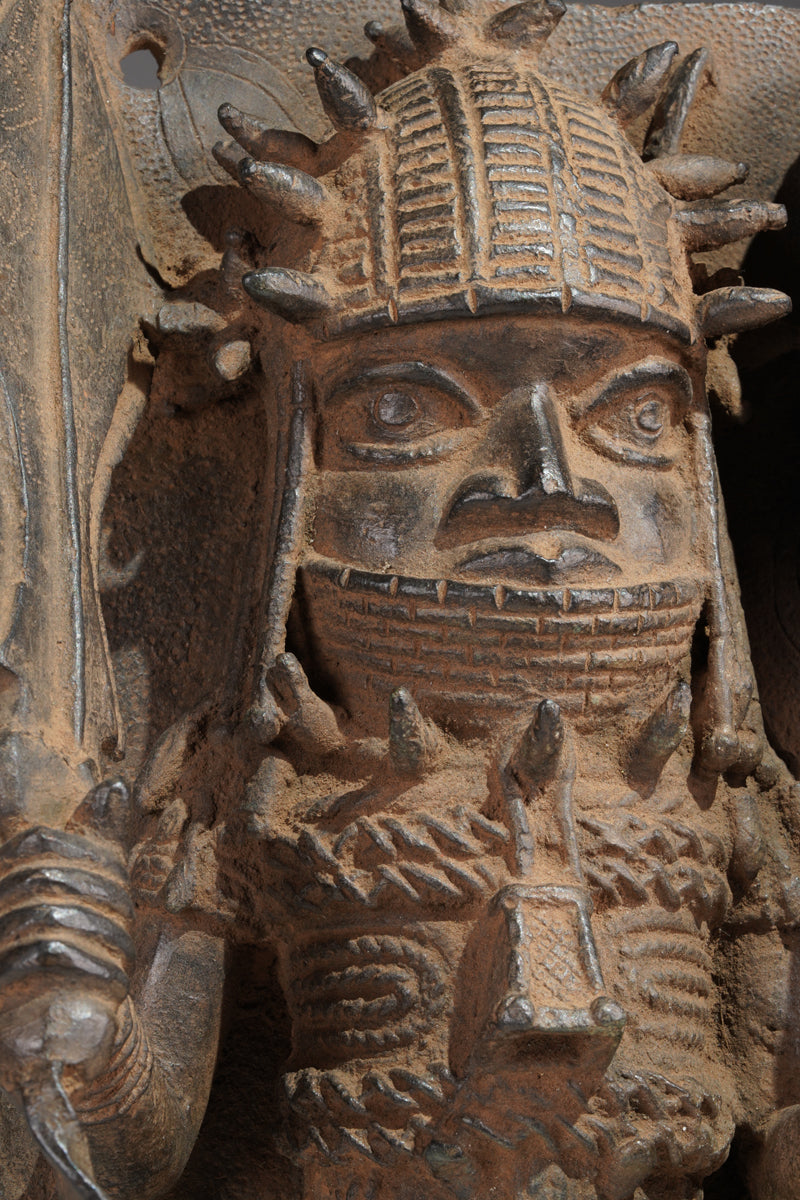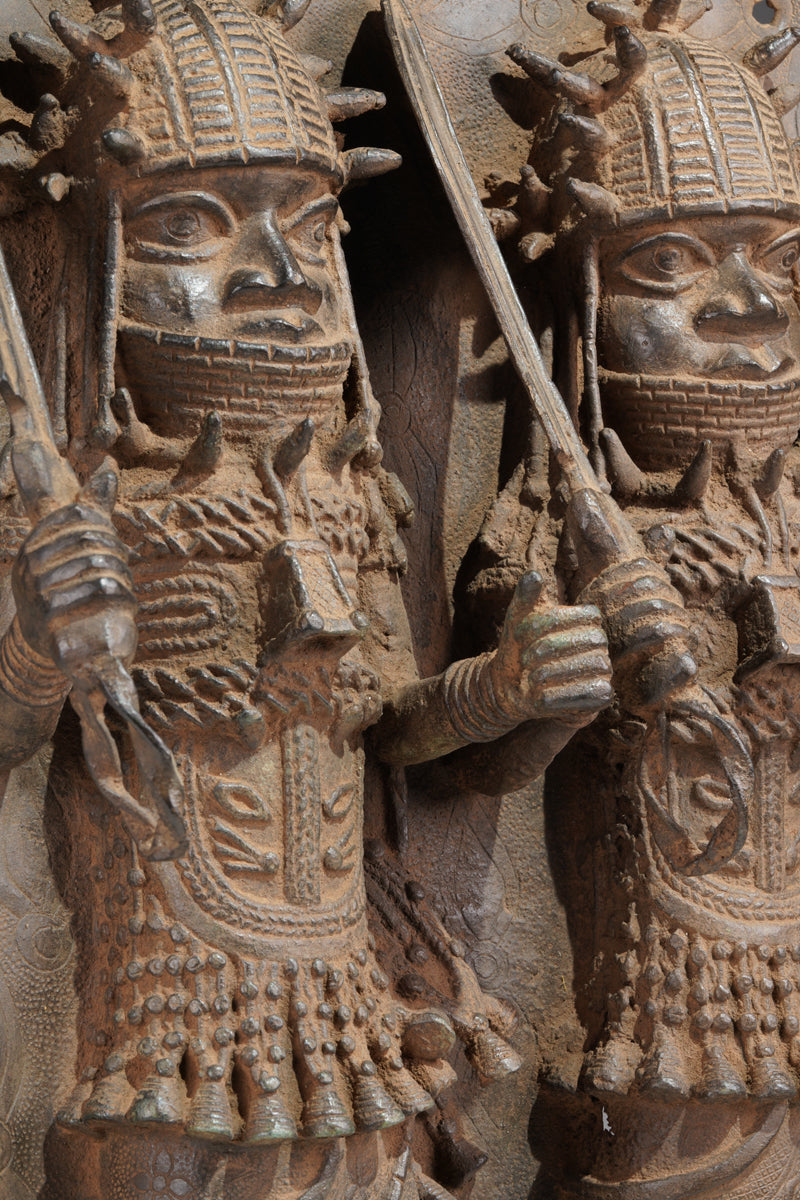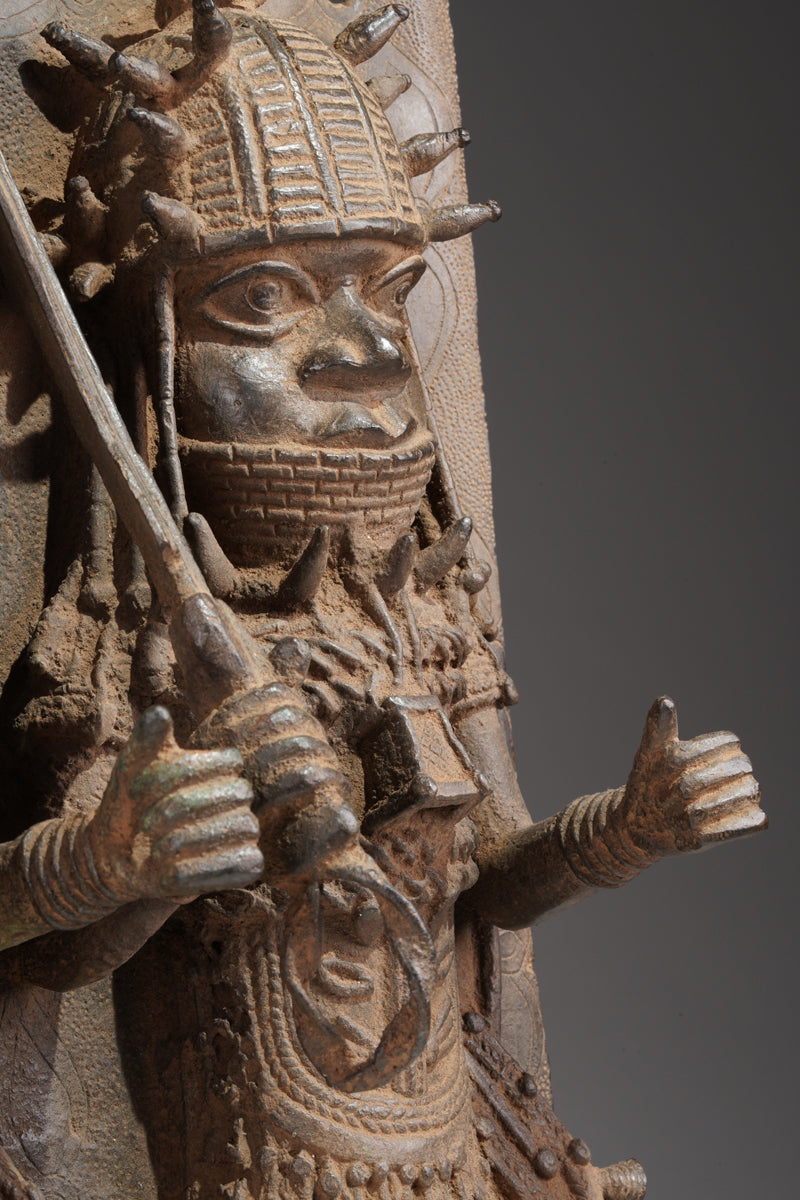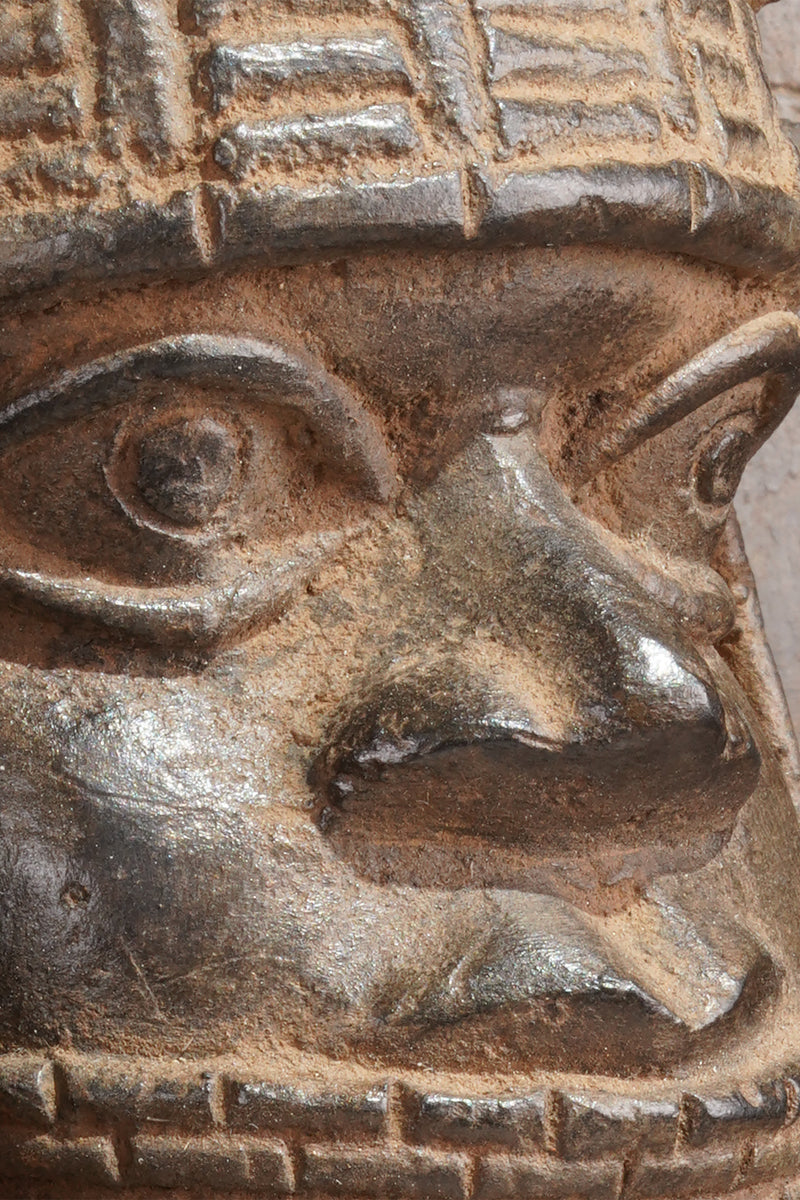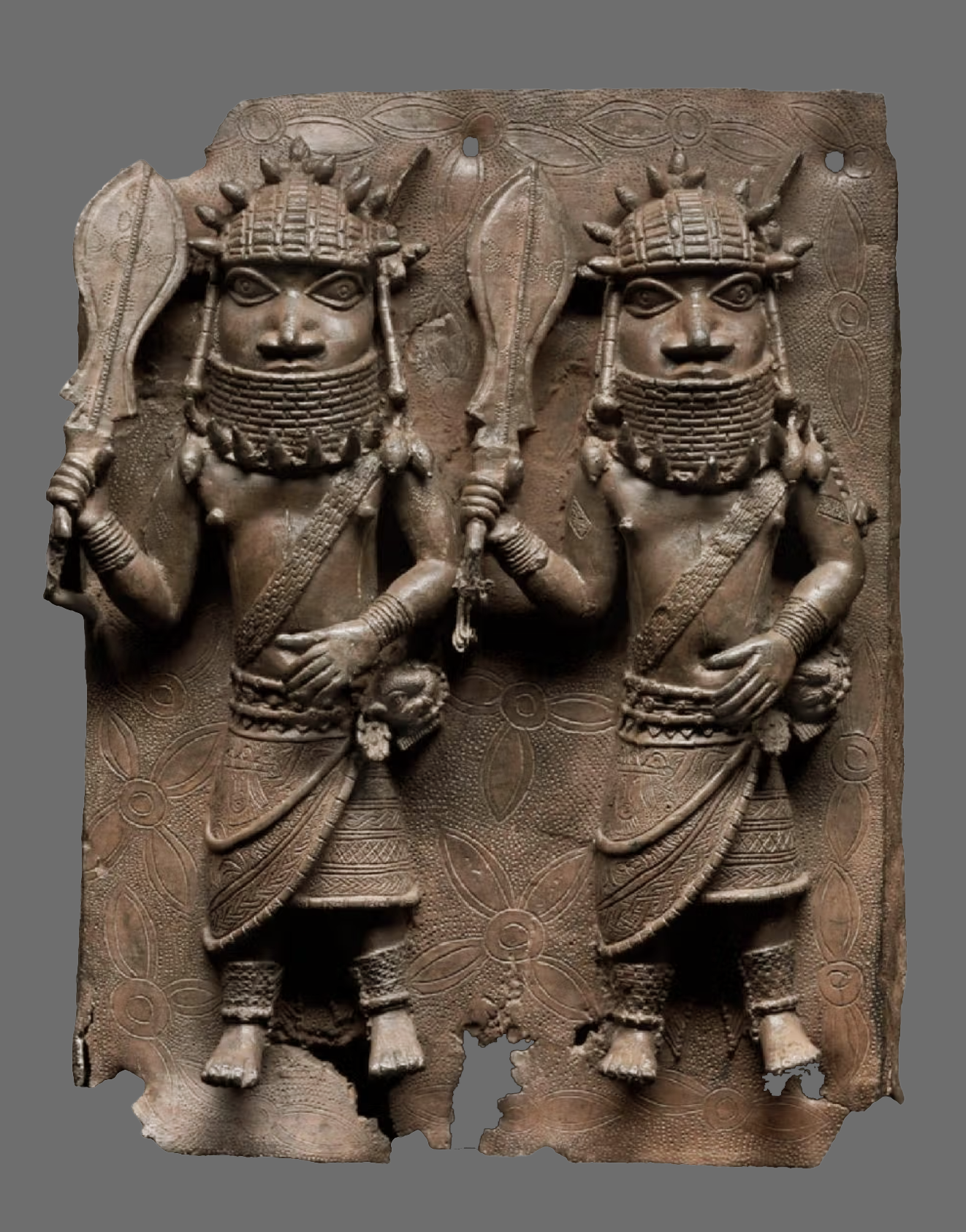Galerie Wolfgang Jaenicke
An Ama of two high-ranking persons ceremoniously holding swords
An Ama of two high-ranking persons ceremoniously holding swords
Couldn't load pickup availability
An Ama of two high-ranking persons ceremoniously holding swords - Ebẹn - in their hands.
In the Kingdom of Benin, ceremonial objects play a critical role in maintaining political authority, social hierarchy, and historical memory. Among these, the Ebẹn stands out as a symbol of chieftaincy and royal allegiance. Though often described as a sword due to its form, the Ebẹn functions more like a sceptre. It is awarded to titled chiefs as a mark of distinction, and its use is deeply embedded in the performative traditions of the Benin court.
During public ceremonies, chiefs carry the Ebẹn as they perform ritual dances, using graceful movements and gestures to pay homage to the Ọba, the king of Benin. One of the most significant aspects of this ritual is the rule that the Ebẹn must never touch the ground. This restriction heightens the ceremonial intensity and demands precision and control from the performer. To ensure this rule is not broken, the Okae-Odionmwan, or head of the executioners, dances behind the chief, armed with a cutting sword known as the Umozo. His presence serves as both a symbolic and literal enforcement of court discipline, underscoring the seriousness of royal protocol.
Complementing the ritual use of objects like the Ebẹn are the historical artworks known in Edo as Ama. These are figural compositions—often relief plaques or carved panels—that serve as visual representations of historical events, individuals, or ceremonial scenes. Ama were not only decorative but mnemonic, designed to aid the memory in recalling episodes from the kingdom’s oral traditions. These oral traditions remain vibrant in Benin culture and are transmitted through festivals, storytelling, poetry, proverbs, songs, and dramatic performance.
Scholar Paula Ben-Amos has noted the existence of over nine hundred plaques, many of which illustrate life at the royal court during the reign of Ọba Esigie in the early sixteenth century. These objects, created in cast bronze or carved wood, serve as a pictorial record of the kingdom’s political and ceremonial history. While the term Ama is used in Edo, English-language scholarship often refers to them as “relief plaques” or “carved panels,” emphasizing their material form over their narrative function.
The production of these plaques coincided with a significant period of expansion and consolidation in Benin’s history. By the sixteenth century, Benin had grown into a powerful empire, its territory extending across a region comparable in size to present-day New England, with a population of more than two million. The royal palace in Benin City, an architectural complex of courtyards and halls, reflected this imperial status. Within one of the palace courtyards, more than 850 bronze plaques were mounted on square pillars that supported the roofed veranda, forming a grand visual archive of royal authority.
It is widely believed that Ọba Esigie commissioned the initial phase of this project following a succession crisis and civil war, as a way to assert his legitimacy and re-establish dynastic stability. His son, Ọba Orhogbua, likely continued or completed the work, embedding within the palace architecture a lasting record of political memory and court culture.
Together, the Ebẹn, the Ama, and the palace architecture itself reflect the highly ceremonial nature of Benin kingship and the sophisticated visual culture that supported it. These objects and traditions were not merely symbolic—they were integral to the performance of power, the transmission of history, and the preservation of royal legacy in one of West Africa’s most influential kingdoms.
This plaque depicts two senior courtiers with ceremonial swords held aloft. These swords were used in special celebrations at court, when high-ranking men would send them twirling into the air and catch them before they fell to the ground. The figures on this plaque are wearing a wealth of coral beads, which can be seen in their crowns, high necklaces, bands crossing the chest, and anklets. The leopard-face ornaments cinching the men’s wrappers, on each man’s left hip, also point to the king’s power; the Benin king was often metaphorically compared to a leopard, a fast, powerful, and stealthy animal.
Height: 45 cm
Width: 31 cm
Weight: 8,7 kg


















